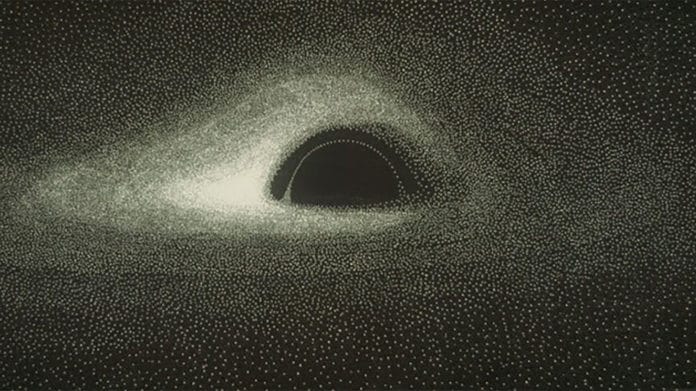Since the first observation of black hole mergers by LIGO in 2015, astronomers have been repeatedly surprised by their large masses. These mergers emit no light, still are observed through their emission of gravitational waves—ripples in the fabric of spacetime that were predicted by Einstein’s theory of general relativity.
Normally, black holes are believed to have masses less than about 40 times that of the Sun because merging black holes arise from massive stars, which can’t hold themselves together if they get too big. But, the black holes detected by LIGO and Virgo observatories have masses greater than that of 50 suns, with some as massive as 100 suns.
Scientists have proposed several formation scenarios, but none of them can explain the diversity of black hole mergers observed so far. Also, there is no agreement on which combination of formation scenarios is physically viable.
A new study by the team of researchers from the University of Hawaiʻi at Mānoa, the University of Chicago, and the University of Michigan at Ann Arbor, have proposed a novel solution to this problem: black holes grow along the expansion of the universe.
This is the first study that shows that both large and small black hole masses can result from a single pathway, wherein the black holes gain mass from expanding the universe itself.
Kevin Croker, a professor at the UH Mānoa Department of Physics and Astronomy, said, “Astronomers typically model black holes inside a universe that cannot expand. It’s an assumption that simplifies Einstein’s equations because a universe that doesn’t grow has much less to keep track of. There is a trade-off, though: predictions may only be reasonable for a limited amount of time.”
During the time between the formation of a pair of black holes and their eventual merger, the universe grows profoundly. If the more subtle aspects of Einstein’s theory are carefully considered, then a startling possibility emerges: the masses of black holes could evolve in lockstep with the universe, a phenomenon that Croker and his team call cosmological coupling.
Light is the best example of cosmologically-coupled material. It loses energy as the universe grows.
Research co-author and UH Mānoa Physics and Astronomy Professor Duncan Farrah said, “We thought to consider the opposite effect. What would LIGO–Virgo observe if black holes were cosmologically coupled and gained energy without needing to consume other stars or gas?”
Scientists investigated this hypothesis by simulating the birth, life, and death of millions of pairs of large stars. Any pairs where both stars died to form black holes were then linked to the size of the universe, starting at the time of their death. As the universe continued to grow, the masses of these black holes grew as they spiraled toward each other.
The result was not only more massive black holes when they merged but also many more mergers. When the researchers compared the LIGO–Virgo data to their predictions, they agreed reasonably well.
Research co-author and University of Michigan Professor Gregory Tarlé said, “I have to say I didn’t know what to think at first. It was such a simple idea; I was surprised it worked so well.”
Scientists noted, “This new model is important because it doesn’t require any changes to our current understanding of stellar formation, evolution, or death. The agreement between the new model and our current data comes from simply acknowledging that realistic black holes don’t exist in a static universe. The researchers were careful to stress, however, that the mystery of LIGO–Virgo’s massive black holes are far from solved.”
Co-author and NASA Hubble Fellow Michael Zevin said, “Many aspects of merging black holes are not known in detail, such as the dominant formation environments and the intricate physical processes that persist throughout their lives. While we used a simulated stellar population that reflects our current data, there’s a lot of wiggle room. We can see that cosmological coupling is a useful idea, but we can’t yet measure the strength of this coupling.”
Research co-author and UH Mānoa Physics and Astronomy Professor Kurtis Nishimura expressed his optimism for future tests of this novel idea, “As gravitational-wave observatories continue to improve sensitivities over the next decade, the increased quantity and quality of data will enable new analysis techniques. This will be measured soon enough.”
Journal Reference:
- Kevin S. Croker, Michael Zevin et al. Cosmologically Coupled Compact Objects: A Single-parameter Model for LIGO–Virgo Mass and Redshift Distributions. DOI: 10.3847/2041-8213/ac2fad
